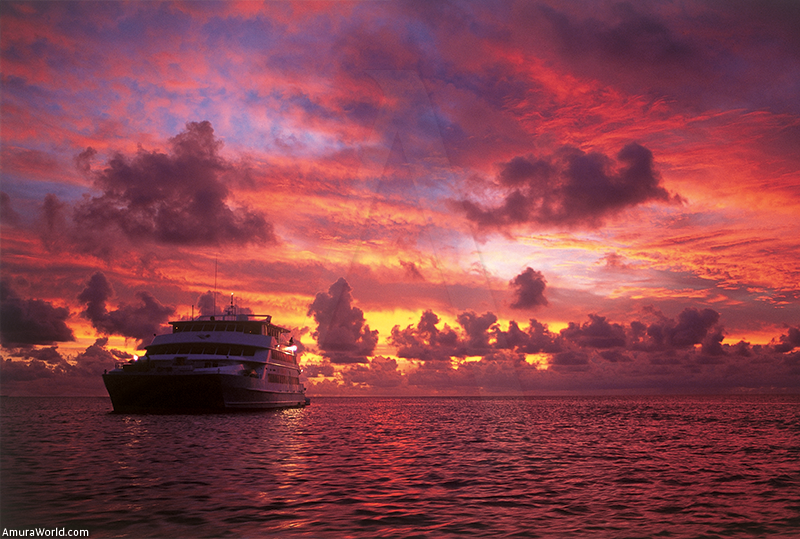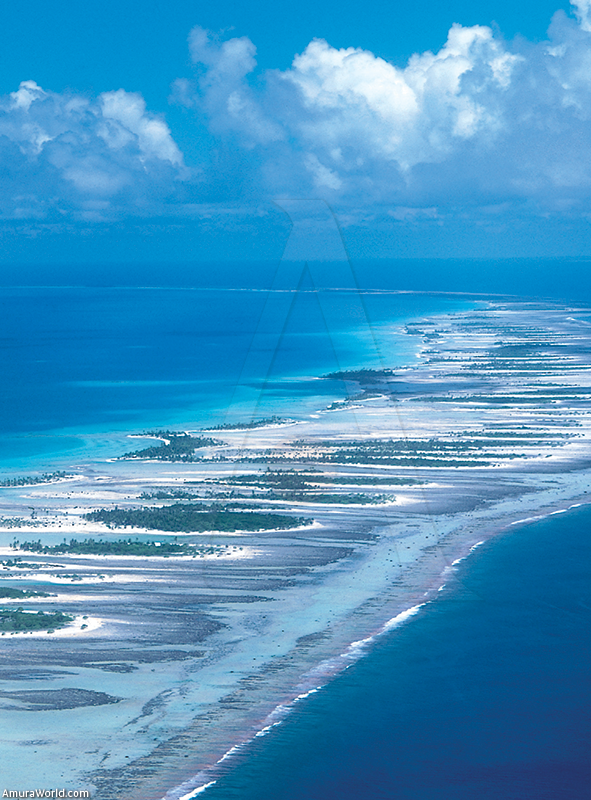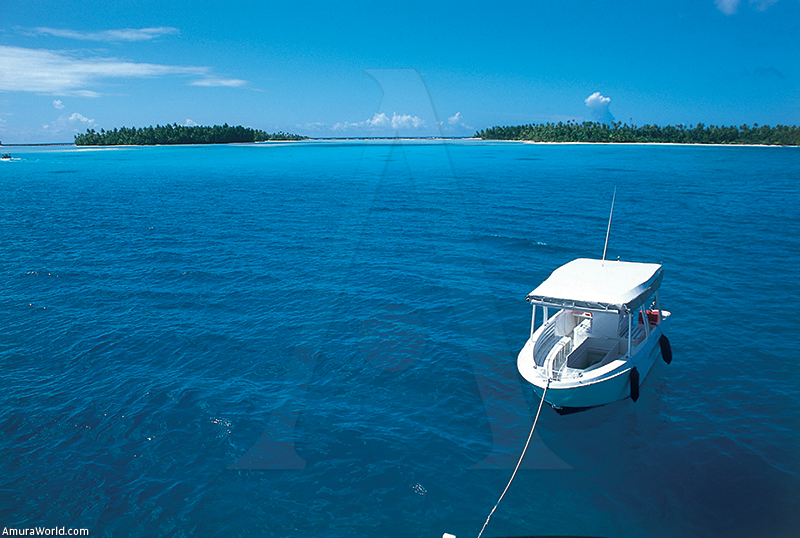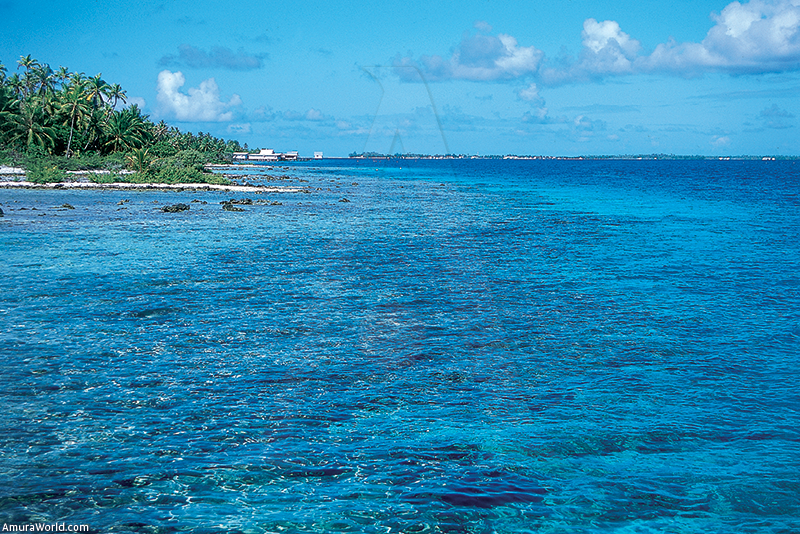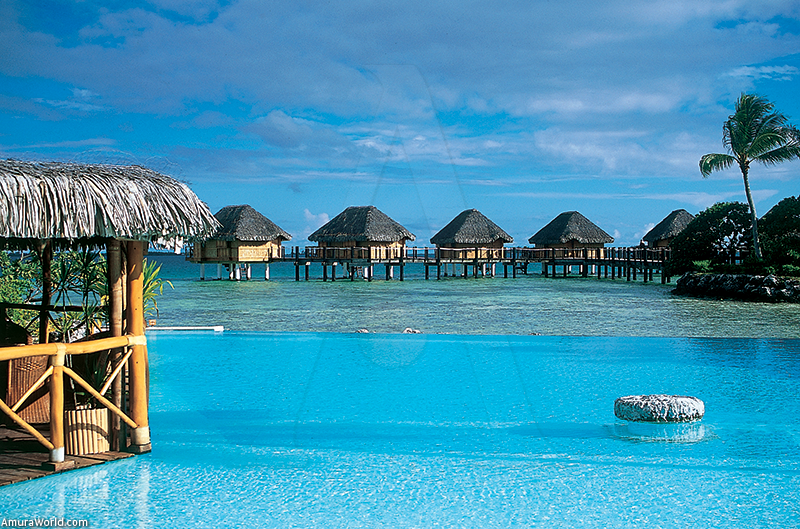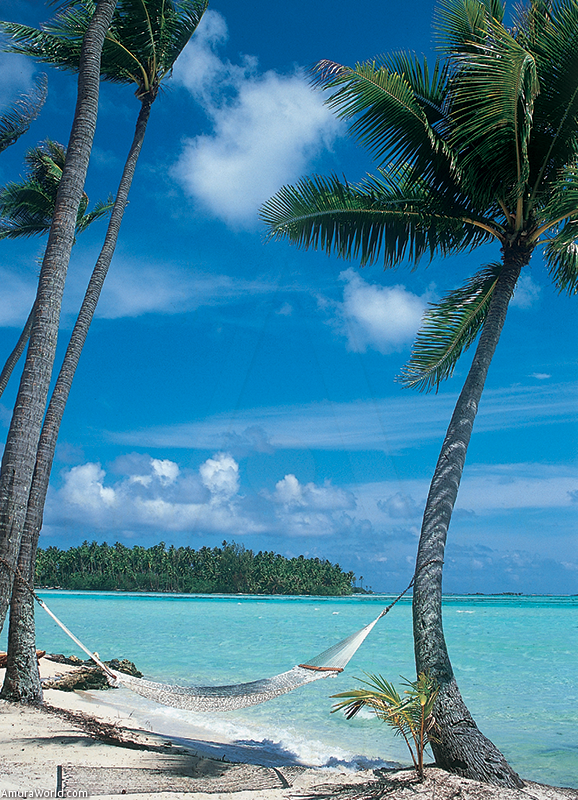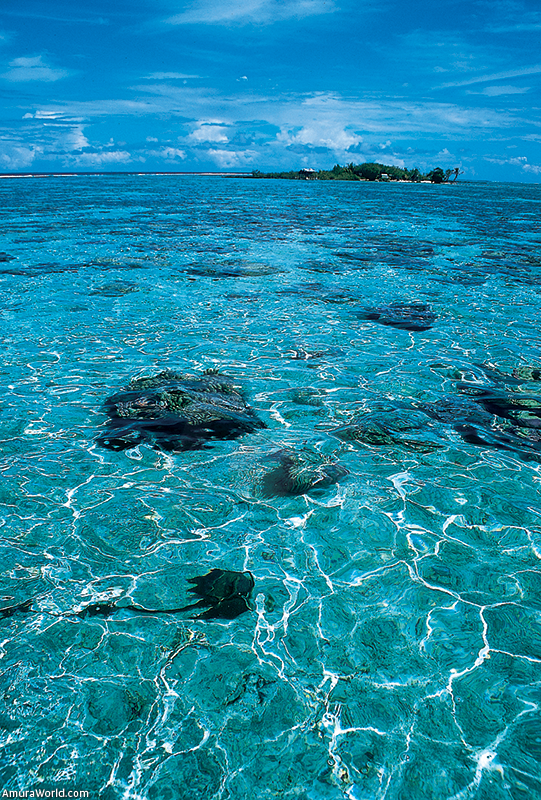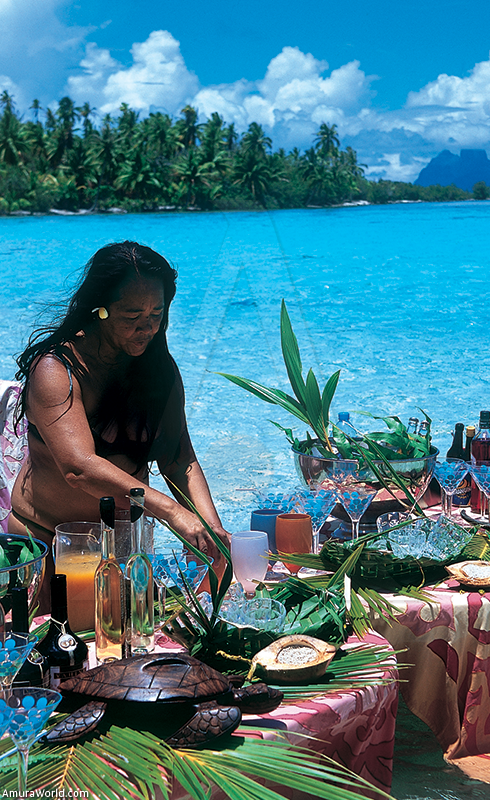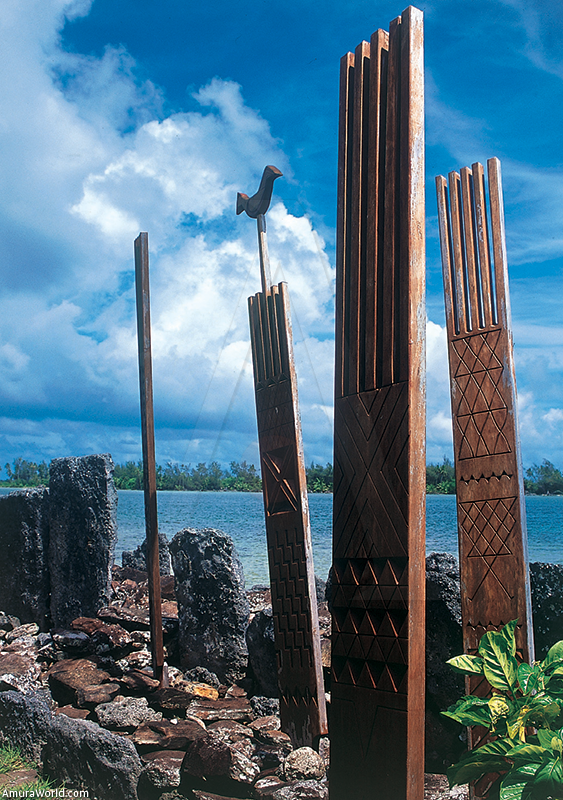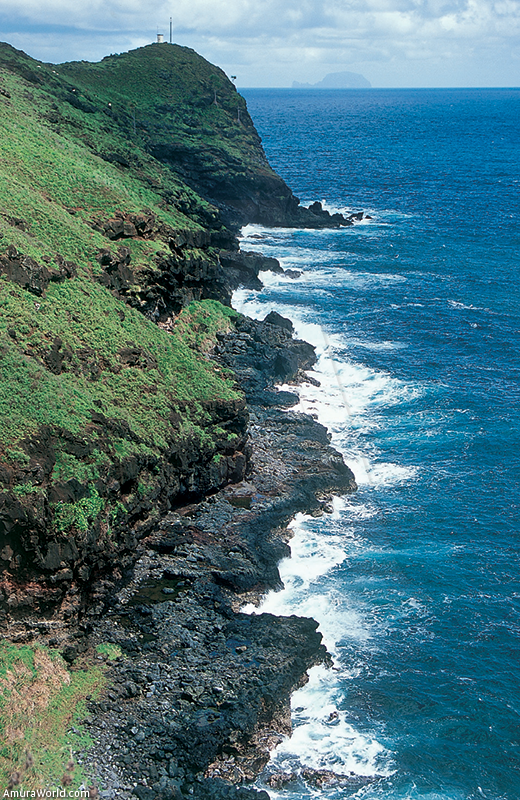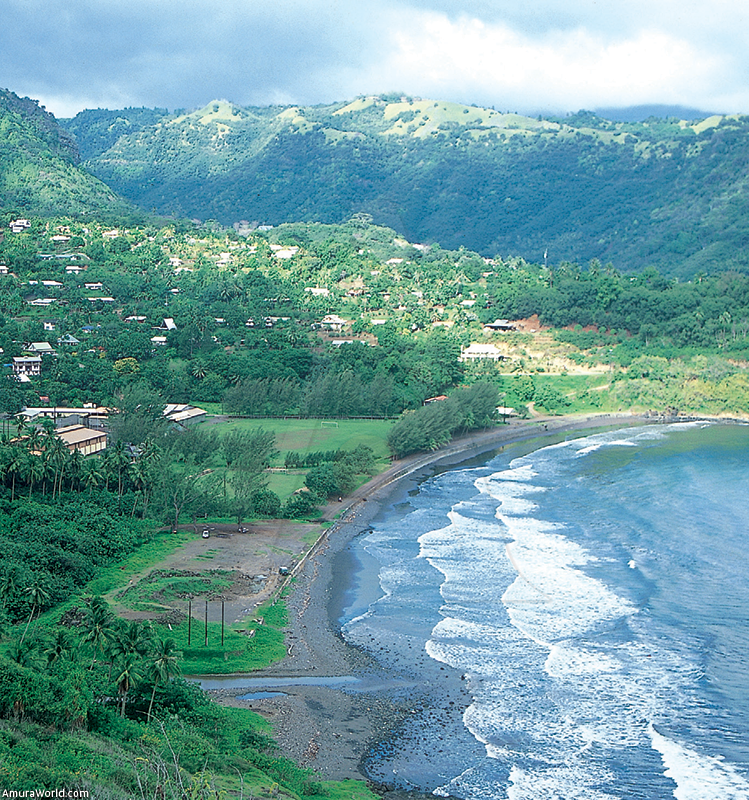Sailing on Turquoise Wate
In the middle of the Pacific there are several archipelagos that form French Polynesia, a number of islands surrounded by lagoons that explode in different tones of blue, ring-like atolls that shelter a world painted in turquoise and black volcanic islands enveloped by a deep blue sea.
The reefs of this southern paradise shelter a marvelous underwater universe inhabited by an immense variety of multicolored fish and the land is covered in tropical vegetation and flowers that fill the air with their exotic perfumes.
Tahiti, in the Archipiélago de la Société (Society Islands), is where Papeete, the capital, is located. It is the largest of the 118 islands and atolls that make up French Polynesia. The islands are of volcanic origin and, while some are still mountains surrounded by coral reefs, a few are mere rings of reef and others never formed at all.
The Polynesian Triangle
In 4000 B.C. there was a great migration from Southeast Asia to colonize the islands of the Pacific and it is believed that they reached the Marquesas archipelago in 200 B.C. From there, they spread to the other archipelagos.
In the so-called “Polynesian triangle”, limited by Hawaii to the north, Easter Island to the southeast and New Zealand to the southwest, people have a common origin and speak Maohi.
The first Europeans arrived with Magellan, who discovered the Tuamotu in 1521, and, in 1595, the Spanish explorer Mendaña visited Fatu Hiva in the Marquesas. Over 170 years later, Capitan Samuel Wallis was the first to visit Tahiti. He declared it English and named it King George III Island.
Without knowing this, a few days later the French explorer Louis-Antoine de Bougainville landed on another part of the island and proclaimed it French (the name bougainvillea, a native plant of these islands, derives from his last name).
Tropical Island Fame
The fame of these tropical islands, with their exotic plants, almost nude women and strong, tattooed men, fascinated the Western world, which became enthralled with the illustrations brought back by Capitan Cook as well as the stories about the legendary mutiny of the Bounty, of the area’s whale hunters and France’s dispute over control of Tahiti, the biggest island.
The Pomare dynasty reigned until 1847, when Queen Pomare accepted French protection and, at her death, King Pomare V was forced to cede Tahiti and its islands to France. Then the Marae, religious stone enclosures where gods were adored and peace, wars and colonization voyages to other islands were celebrated, were abandoned and the tikis, statues of gods, fell to the ground. In 1957, all the islands where integrated into French Polynesia, a French region with its own government.
The Polynesians inherited the great strength of their Maohi past filled with legends of gods, warriors and javelin-throwing contests; a time when surfing was the favorite sport of kings and strong men challenged each other to canoe races or rock lifting.
For over 123 years the great competition is organized every July in Papeete, a faithful witness of the past (Heiva I Tahiti). Starting in adolescence, these Polynesian men adorn their bodies with tattoos that are protective symbols that represent the gods as well as signs of beauty and courage.
Tuamotu Archipelago
Our journey was an invitation to discover this marvelous sea, fabled islands and their extraordinary people. The traditional flower necklaces welcomed us, accompanied by the smiles of those that present them, the music increased and happiness was painted in the blue tones of the ocean.
In this way, we arrived in Rangiroa Island in the Tuamotu Archipelago, an atoll with a lagoon known to be the second largest in the world and one of the best places to scuba dive. Its ring, enclosing a deep blue lagoon bordered in a palette of turquoise tones, is 170 km (105.6 miles) long and is made up of 240 small islands.
From the plane we jumped to the boat, flung in the fishing reels and, in no time at all, we had a fish for ceviche. The boat took us to the Haumana, a marvelously elegant, sophisticated catamaran with 14 cabins that awaited us in the town of Tiputa, where the red arrow of the church rose above the coconut palm trees.
Sailing Towards the East
After a welcoming song we sailed east, cruising inside the lagoon. The islands were interrupted, allowing water to pass above the reef, the white sand dazzled in the tropical sun and the sea invented tones of blue that exist nowhere else. We anchored in front of one of the small islands —known as motus— and reached the beach on board a small boat, where we also had a chance to fish.
From the white sand we made our way through a forest of palm trees and arrived at the reef that protects the external part of the atoll. The reef, covered by a small amount of water and lashed by hard waves, is a world of sea urchins, morays and multi-colored fish.
Just reaching up for some coconuts was enough to refresh ourselves and swimming was delightful and filled with magical moments that culminated in a sumptuous sunset over “le Lagon”, when the sun was on fire and the water played with golden tones.
The night was filled with stars, the crew’s music vibrated to the rhythm of ukulele and drums and the dancer moved sensually. It was a truly exceptional night.
An Image of Paradise
We set sail in the morning and headed to the southeast, reaching a few small islands where the sand has tones of pink. It is a picture of paradise filled with fabulous colors and coconut palms.
The day was devoted to scuba diving, exploring the small islands and enjoying this true treasure, where the density of fish is superior to any other part of the world. Later, a taxi-boat took us to Tiputa in 45 minutes.
In the only white coral street of the town, the houses are protected from the sun by flowering trees or coconut palms decorated with shells. The people greet you warmly, in the church the elegant women wear hats and their songs echo like a caress of the breeze while, in a small house, young girls practice a dance for the evening. The warm blue dazzling water is inhabited by manta rays, butterflyfish and angel fish. Each Air Tahiti take off or landing is a parade of pictures of a unique world. Strange fissures animate the external part of the reef pummeled by the waves, the white sand is painted in blue and ochre around the small islands covered in palms, while the lagoon presents an impressive variety of blues.
Manihi Atoll
Landing in Manihi, an atoll located to the north and 520 km (323 mi) from Tahiti, the golf cart was waiting on the strip to take us to the Manihi Pearl Beach Resort hotel. Its rooms, built on stilts, are on the edge of a small coral wall populated by the most beautiful fish.
Plunging in to the waters is to swim in the world’s most stunning aquarium, discovering colors that only nature can invent. The palms play with the shadows, the sun paints the blues of the sea depending on the movement of the clouds and the lagoon invents a paradise surrounded by the almost black color of the ocean. A storm had just passed, the sun was setting on the horizon, and the breeze improvised charming caresses. Mahini is the atoll of cultivated pearl farms, the famous black pearls of Tahiti, due to the lagoon’s ideal water conditions, temperature, density, salinity and light.
The atoll is 27 km (16.7 mi) long and 8 km (5 mi) wide and the majority of its inhabitants make a living from the cultivation of Pinctada margaritifera, a pearl oyster that requires a great deal of care and nurturing to incite produce a black pearl. These farms are located on the motus that form the atoll. Very early, we boarded a boat to visit a farm and sailed on waters of scintillating colors. It was interesting to watch the whole process of cultivation and see pearls that vary from steel gray to creamy white.
Bora Bora Island
The plane took us to Bora Bora, a name that awakens many fantasies, an island that invites visitors to enjoy its oddly-shaped volcano surrounded by an extravagant lagoon. The water, of superb colors, seems to make its way from the motus to the mountain. The island is a celestial scene.
From the airport, a boat took us to Ti’a Moana, the stunning yacht of Bora Bora Cruise. It has 30 cabins and would be our home for four days. Thanks to its shallow draft, the yacht can safely sail in the lagoon and near the coast.
Located 275 km (170 mi) from Tahiti, it is estimated that Bora Bora was formed about seven million years ago. It preserves its main island, 9 km (5.6 mi) long and 4 km (2.4 mi) wide, with its Otemanu (727 m/2,385 ft) and Pahia (661 m/2,168 ft) peaks. Bora Bora is surrounded by an immense lagoon limited by a wide reef cut in only one place by the Te Ava Nui pass.
It is Polynesia’s most popular island and has numerous hotels, restaurants and galleries as well as vestiges of the past such as petroglyphs and marae. Its lagoon shelters 700 tropical fish species and manta rays live in Matira Point.
The view from the yacht is impressive and the afternoon sun lights up the peaks. The Ti’a Moana sailed off to follow the beautiful coast, lined with bays and beaches, until it dropped anchor in Fare Piti, which has a dock and yacht club, so that we could enjoy the exceptional sunset that dazzled the Tevairoa motu while we drank champagne. An elegant, sophisticated dinner was served under a starry sky.
Taha’a Island
The yacht set sail at 11:00 P.M. We left the Bora Bora lagoon to enter, after 90 minutes of sailing, the Taha’a lagoon, the vanilla island. The sun shone brightly during the morning as we discovered the fabulous scenery.
The yacht was anchored between the main island, with its green mountains, and some motus that enclose the 10 to 30 m (33 to 98 ft) lagoon of fabulous colors.
Stephane and his crew took us on speed boat to a shallow place and, once in the water, he attracted the sharks by offering them food. The fearsome animals swam around us in what suddenly appeared to be an authentic dance of terror even though Stephane insisted that they are harmless. In another place we swam with manta rays, which stuck close to our bodies as if inviting us to stroke their soft skin, even though their tails are rough.
Finally, we got close to a motu, where a table decorated with fruit and drinks was installed by the water. We enjoyed traditional cuisine — fish with coconut cooked in a pit in the sand, chicken and vegetables—to the rhythm of music and with our feet in the water. It was a version of paradise.
As soon as we returned to the Ti’a Moana we sailed off and went around beautiful Taha’a Island, with its deep Apu and Haamene bays. We saw a church with a red roof at the edge of the water, the mountains covered in vegetation and vanilla plants, beaches where sailboats anchor and pearl farms with their small houses over the water. In the yacht, Tavita Manea, the great tattoo artist, showed us his art and body, completely tattooed as if it were a book.
Sacred Islands
The morning surprised us with a short sail on the lagoon to reach Raiatea, the sacred island, with its 1,017 m (3,336 ft) high peak. Raiatea is thought to be the first colonized island, the place where civilization was first established, and the last to submit to French colonization after 10 years of war.
We penetrated the deep Faaroa bay and dropped anchor. Later, in a kayak we entered the river, whose waters descend from Mount Toomaru. The trip under the shade of the trees is enchanting. We also visited a small botanical garden of exotic plants of surprising forms and colors. At the end of the morning we docked at the Uturoa marina, a small town that offers every service and leads a calm life at the foot of Mount Tapioi, which we climbed to admire the fascinating view of this green island surrounded by a lagoon and reef.
In Raiatea we dined under the stars. In the morning we sailed towards Huahine, a wild island that vibrates far from the usual tourism haunts. In Fare, the Ti’a Moana rested in the dock near a white sand beach where children swam.
We began our tour of the island and discovered vanilla plantations, the Maeva archeological site with its marae on the edge of a fish-trap-laden lagoon, and the town of Faie, with its enormous sacred eels.
From the belvedere the view of the immense Maroa bay, surrounded by mountains, like Mount Turi, which stands 669 m (2,195 ft) high, is unique. Huahine is actually two islands joined by a bridge and separated by the Maroe and Port Bourayne bays, which offer the best shelter for sailors and some idyllic white sand beaches framed by palm trees.
Marquesas Archipelago
We sailed along the west coast, admiring the sumptuous green scenery rising from the deep blue waters, visited Port Bourayne, and finally dropped anchor in front of heavenly Hana Iti beach, where the night was a celebration complete with a barbeque pit and typical dances.
But our destination was another so we left the yacht on a speed boat. A car was waiting to take us to the airport, from where we flew to Raiatea. A boat took us to the Taha’a, Private Island & Spa (Relais & Châteaux), a charming hotel on a private island.
The next day took us back to Papeete, where we visited the market, cathedral, and lively downtown before taking the plane to Nuku Hiva, the biggest island of the Marquesas Archipelago.
Les Marquises are volcanic islands without lagoons. They have black sand, beautiful cliffs that plunge into the sea, strong waves, dramatic scenes of ravines, jagged mountains and luxurious vegetation.
From the airport we crossed the island through a dirt highway and reached Taiohoe, the main city on the edge of a fabulous bay enclosed by mountains. The city calmly dozes to the sound of church bells and is a place where religious figures carved in wood have Polynesian features and the men are covered in tattoos.
Hooumi is a town hidden at the end of a deep bay near an impressive gully. The whole island, with its black ravines covered in bright foliage, is a mystery.
The Dramatic Scenery of the North Coast
We left this place of fantasy to fly to Hiva Oa, a smaller island where Paul Gauguin ended his life, as did the Belgian singer Jacques Brel. The scenery is dominated by impressive Mount Temetiu, 1,200 m (3,937 ft) high, which dramatically descends towards the Atuona bay, where the tombs of the two artists are found.
The north coast is an enticement to discover dramatic sceneries, bays enclosed by black cliffs, and Puamau bay, protected by its strange rock, which is a safe shelter for sailors.
The archeological ruins shelter beautiful tikis, stone figures that represent the gods that directed the lives of the courageous Polynesian explorers. At the other end of the island, Taaoa is considered one of the most ancient sites, stretching from one side of the mountain down to the black beach.
Returning from the Enchanting Island
Once back in Papeete, and installed at the edge of the hotel’s artificial lake filled with multicolored fish, it was time to ponder. I believe that the beauty of these enchanting islands, filled with the colors of paradise, different seas and diverse scenery, must be a gift of the gods created by angels. Only a privileged few can enjoy them.
French Polynesia provokes such a burst of enormous gratifying feelings that exploring it is like visiting a magical, insuperable dream.
Text: Patrick Monney ± Photo: Patrick Monney

